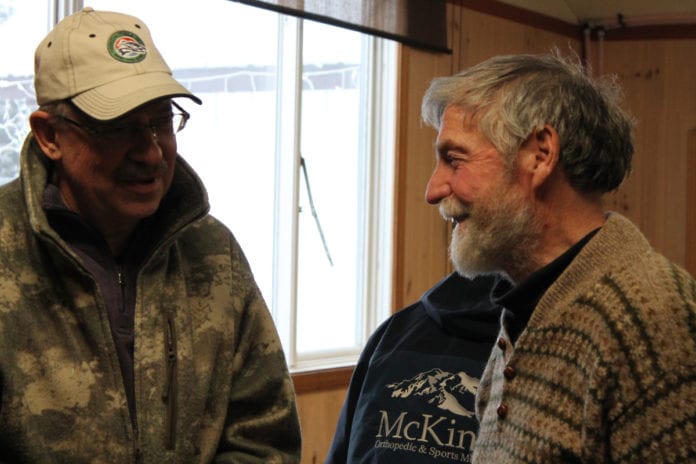
What happens when you get Copper River subsistence fish wheel operators, sportfishing guides, dipnetters and commercial drift gillnetters in one room together?
I asked this diverse group to come together and take some time to hear each other’s concerns because in my work throughout the watershed I hear lots of finger-pointing and blame being directed among user groups about who is taking whose fish. But this habit of blaming someone else is distracting, taking all salmon harvesters’ attention away from the challenges facing the entire Copper River system.
The second Copper River Salmon Harvesters Roundtable was held in Tazlina Feb. 9, with two dozen participants. Each salmon harvest user group was represented, as well as the Alaska Department of Fish & Game, the Prince William Sound Aquaculture Corporation, the Ahtna Intertribal Resources Commission, the Native Village of Eyak, Cordova District Fishermen United, the Chitina Dipnetters Association, Wrangell-St. Elias National Park & Preserve, and the Copper River/Prince William Sound Marketing Association. Funding for people to travel and meet in person and for organizing the Roundtable came from Patagonia and from the Copper River/Prince William Sound Marketing Association, which has also funded other efforts for collecting data that contribute to fisheries management on the Copper River.
Salmon harvesters, fish biologists and other stakeholders spent the day talking about what they want people to know about the Copper River, what changes they’ve seen in their fisheries over their fishing seasons, and what their most pressing questions are about what’s happening on the river.
Stakeholders want people to know that the Copper River “connects us to the ocean,” that “it’s actually so many different stocks,” that “it’s a dangerous place,” and that “it’s a sacred place that is critical to the culture of those who call it home.”
Some of the trends observed by fisheries managers, commercial fishermen, sportfishing guides, and fish wheel users over time include: increase in uncertainty of forecasts for sockeye, dramatic decreases in the time and area fished commercially, greater river level fluctuations (used to be that when it rained, water level dropped because temperatures were cooler, now it’s the opposite), and smaller fish size (sockeyes, (not necessarily Chinook).
Last year’s weak sockeye salmon returns certainly caught people’s attention. Chelsea Haisman, executive director of CDFU, observed, “while the past several runs have been weaker in comparison, we’ve also had record sockeye runs in the past 10 years, and upriver escapement was the highest it’s ever been in 2013 and 2014.”

Participants heard from Matt Piche, a fish biologist with NVE, about mark and recapture research to estimate in-river abundance of Chinook salmon and from Kristen Gorman, Ph.D., with the Prince William Sound Science Center about sockeye salmon energy levels for migration and reproduction. We also had a good exchange with ADF&G biologists about their “portfolio” management approach for the Copper River. The strength of the Copper River system is that it’s made up of many different sockeye salmon stocks from a range of tributaries. That also means it’s not possible to have an escapement or spawning goal for each tributary to the Copper River because there are so many. We also learned that ADF&G forecasting models don’t account for marine survival right now because of a lack of data.
At the end of the day, participants reflected on the value of coming together in a non-regulatory setting. Dennis Zadra, president of the CRPWSMA, commented, “I thought it was so valuable, I’d never been up there, and it was great to be in the Copper Basin and meet face to face with other salmon fishermen, especially in a non-confrontational setting. One concern we heard among all fishermen is the increased number of seals and sea lions preying on salmon.”
“I really didn’t want to be here, I’ve been involved with the Board of Fish meetings in the past and it’s contentious, but I always knew that this is what was needed and it’s very encouraging to me,” said Mark Hem of Hem Charters, a dipnet fishing transporter on the Copper River.
Kristin Carpenter is the executive director of the Copper River Watershed Project.














